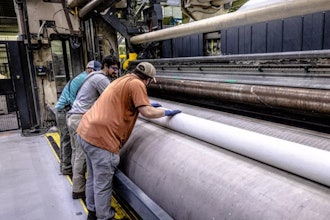CHATTANOOGA, Tenn. (AP) - Chlorine plants in Tennessee, Georgia, Ohio, West Virginia and Wisconsin are worse mercury polluters than coal-fired power plants and are out of step with the chorine industry's change to nonpolluting technology, an environmental group said Wednesday.
Representatives of Washington-based Oceana identified the five locations as Olin Corp.'s chlorine plants in Charleston, Tenn., and Augusta, Ga.; Ashta Chemicals in Ashtabula, Ohio; PPG Industries in Natrium, W. Va.; and ERCO Worldwide in Port Edwards, Wis.
Jacqueline Savitz, director of Oceana's 2-year-old campaign to stop seafood contamination, said more than 115 other chlorine plants have changed to mercury-free technology.
Mercury is a neurotoxin that accumulates in fish. Ingesting mercury can cause nerve and brain damage to pregnant women, women of childbearing age and young children. Mercury also can lead to kidney damage in children.
Savitz said the chlorine plants in Tennessee and Wisconsin are the largest single mercury polluters in those states.
Lenny Scott, director of technology at the Olin plant at Charleston, said ''use of mercury at our Charleston plant is careful and controlled. We meet or do better than the laws and regulations on mercury emissions.''
Scott said the company has spent $54 million to ''update, modernize and reduce mercury emissions'' at Charleston over the past eight years and emissions are 50 percent lower this year than in 2006.
PPG Industries spokeswoman Betsy Mallison Bialosky said in a statement that the company has made ''significant reductions'' in mercury emissions. She said investing in mercury-free technology is ''not an economically feasible option'' for the plant.
Representatives of the other companies could not be reached for comment.
Chlorine is used in swimming pools, plastic tents and paper towels and is produced in a chemical reaction process that involves pumping a saltwater solution through a vat of mercury, or a mercury cell.
Oceana research shows the average mercury-cell chlorine plant emits four times more mercury than coal-burning power plants that are also receiving attention as mercury polluters.
The group's report on chlorine plants says changing to mercury-free technology would mean a ''tremendous financial benefit'' for the five plants, which each release hundreds of pounds of mercury into the air every year.
A Democratic presidential candidate, U.S. Sen. Barack Obama, D-Ill., Wednesday reintroduced a bill that would ban the use of mercury in chlorine or caustic soda manufacturing by the year 2012. Obama originally introduced the legislation last year.
Simon Mahan, lead author of Oceana's new report on chlorine production, said the Olin plant discharged 1,250 pounds of mercury in 2005, the single largest emission in Tennessee and nearly three times more than TVA's biggest mercury-polluting power plant. He said ''it only takes one-seventieth teaspoon of mercury to contaminate a 25 acre lake.''
The Tennessee Valley Authority operates 11 coal-fired power plants, seven of which are in Tennessee, and U.S. Sen. Lamar Alexander, R-Tenn., is co-sponsor of a bill that would cut mercury emissions by 90 percent by 2015. The Bush administration has proposed a 70 percent cut in mercury.
The Tennessee Department of Environment and Conservation is working with scientists from the Oak Ridge National Laboratory, the TVA, Environmental Protection Agency and conservation groups to determine the effects of coal-fired power plants' mercury emissions on the Smokies. A department spokesman has said the study should be completed by this fall.
Tisha Calabrese-Benton, spokeswoman for TDEC, said the Olin plant in Charleston ''holds permits from the department and it is required to follow the requirements of those permits for air, water and solid waste.''


















